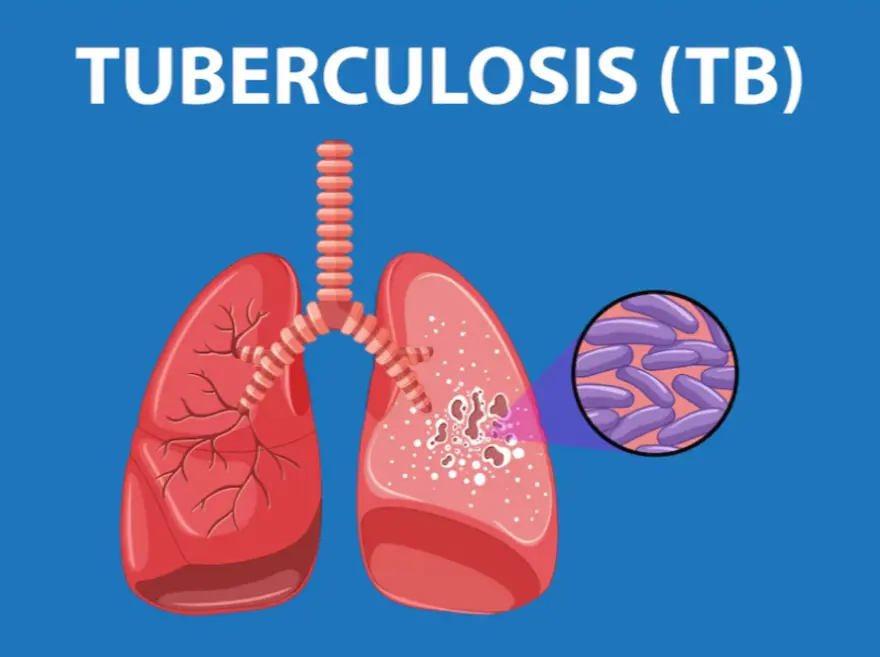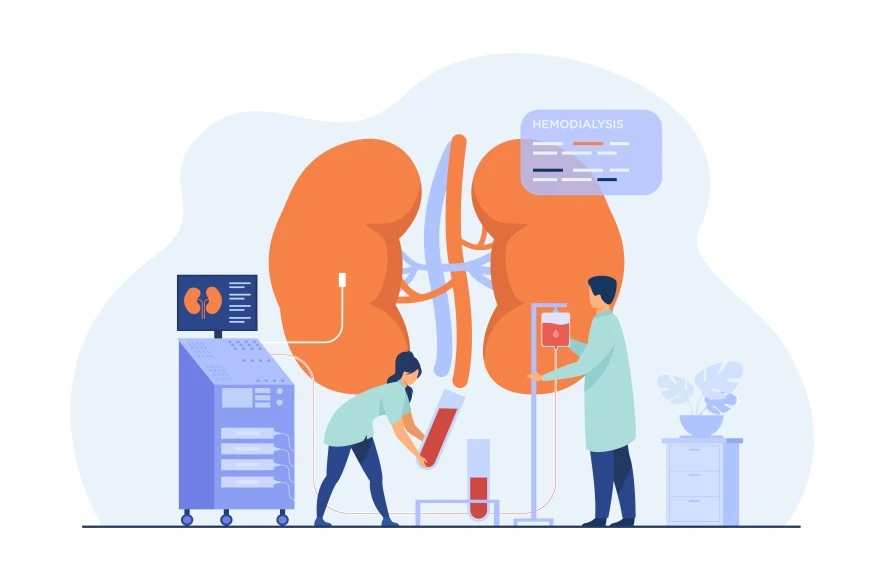Preventive Healthcare
Guide to CBNAAT Test for Tuberculosis: Advantages, Purpose, Procedure And More

Table of Contents
- What is the CBNAAT Test?
- Who needs the CBNAAT Test?
- What are the advantages of the CBNAAT Test?
- What is the purpose of the CBNAAT Test?
- How can I prepare for a CBNAAT Test?
- What is the procedure for the CBNAAT Test?
- Are there any risks or side effects associated with the CBNAAT Test?
- Is fasting required for the CBNAAT Test?
- How long does the CBNAAT test take?
- How to do the CBNAAT Test?
- What diseases can be detected using the CBNAAT Test?
- How long does it take to get results from a CBNAAT Test?
- Can the CBNAAT Test be done at home?
- What is the difference between the CBNAAT Test and other diagnostic tests?
- Conclusion
What is the CBNAAT Test?
The CBNAAT test full form is the Cartridge-Based Nucleic Acid Amplification Test. It is a rapid molecular diagnostic test primarily used for diagnosing Tuberculosis (TB) and detecting Rifampicin resistance. It is a gold standard test for detecting active TB infections by analysing the DNA of the TB bacteria in sputum samples. CBNAAT is fully automated, providing quick and accurate results, making it an ideal option for early diagnosis and treatment initiation.
Who needs the CBNAAT Test?
The CBNAAT test is essential for individuals suspected of having Tuberculosis (TB) infections, especially pulmonary TB cases. It is particularly valuable for diagnosing drug-resistant TB by detecting rifampicin resistance, which is an indicator of multidrug-resistant TB (MDR-TB).
Additionally, the CBNAAT test is useful for testing non-respiratory specimens, such as lymph nodes and other tissues and fluids, for suspected cases of extrapulmonary TB.
Also, there is no CBNAAT test normal range as it is a diagnostic test used to detect specific pathogens such as tuberculosis bacteria and their resistance to certain drugs.
What are the advantages of the CBNAAT Test?
The CBNAAT test for TB has the following advantages:
- Rapid Results: Detection is complete within 2 hours, enabling swift diagnosis and treatment initiation.
- Automation: The test is fully automated, reducing the need for manual intervention and making it less labour-intensive.
- High Reliability: It provides rapid results with high reliability, aiding in accurate diagnosis.
- Minimal Training Required: Requires minimal training of personnel compared to other methods like culture, enhancing its feasibility in various healthcare settings.
- Lower Biosafety Level: Requires lower biosafety levels compared to culture, improving safety for laboratory personnel.
What is the purpose of the CBNAAT Test?
The CBNAAT test for TB serves two main purposes:
- Diagnosis of Tuberculosis: The CBNAAT test is used as a rapid molecular diagnostic test for detecting tuberculosis infections. It analyses the DNA of the TB bacteria in sputum samples to accurately diagnose TB.
- Detection of Rifampicin Resistance: Additionally, the CBNAAT test helps to identify rifampicin resistance, which serves as an indicator of multidrug-resistant tuberculosis (MDR-TB).
How can I prepare for a CBNAAT Test?
Preparing for a CBNAAT typically involves the following steps:
- Sputum Collection: Take two deep breaths and cough to produce a sputum sample. Collect at least 5 ml of sputum.
- Sputum Liquefaction: Use a vortex to liquefy the sputum sample for processing.
- Follow Healthcare Provider's Instructions: Adhere to any specific instructions provided by your healthcare provider for the testing process.
What is the procedure for the CBNAAT Test?
The CBNAAT test procedure involves the following steps:
- Sample Collection: Your sample is collected first, where you have to give your sputum sample by coughing with force.
- Sample Processing: Then the sputum sample is mixed with a sample reagent and incubated for 15 minutes at room temperature.
- Cartridge Loading: Processed sample is then loaded into the CBNAAT machine's cartridge.
- Automated Testing: The machine automatically processes the sample and performs nucleic acid amplification.
- Result Analysis: Results are typically available within a few hours, indicating the presence of tuberculosis and rifampicin resistance if applicable.
Are there any risks or side effects associated with the CBNAAT Test?
The CBNAAT test typically involves sputum collection, which poses no significant risks or side effects. While there are no inherent risks associated with the test itself, proper biosafety measures should be followed during sample handling to minimise the risk of contamination or exposure.
Is fasting required for the CBNAAT Test?
No, fasting is not required for the CBNAAT test. This test is typically used for diagnosing tuberculosis and does not have any specific dietary restrictions associated with it. Therefore, individuals undergoing the CBNAAT test do not need to fast before the procedure.
How long does the CBNAAT test take?
The CBNAAT typically takes around 90 minutes to complete from start to finish. This test is done quickly providing results within 2 hours. After providing the sample, further steps are automated, and the process is usually completed within this timeframe.
How to do the CBNAAT Test?
To conduct a CBNAAT Test, follow these steps:
- Collect a sputum sample as instructed by a phlebotomist.
- Ensure proper labelling of the sample container.
- Hand over the sample to the lab technician.
- Await the results, usually available within 2 hours.
- Remember to cough deeply for the sputum sample.
- Follow any additional instructions provided by the healthcare provider.
What diseases can be detected using the CBNAAT Test?
The CBNAAT test primarily detects tuberculosis (TB) infections caused by Mycobacterium tuberculosis. Additionally, it can identify rifampicin resistance, which is indicative of multidrug-resistant tuberculosis (MDR-TB). The test is also used for the rapid detection of MTB (Mycobacterium tuberculosis) in samples.
How long does it take to get results from a CBNAAT Test?
The results of a CBNAAT test typically become available within 2 hours. This rapid turnaround time facilitates early detection of diseases, enabling prompt initiation of appropriate treatment.
Can the CBNAAT Test be done at home?
No, the CBNAAT test cannot be done at home. It requires specialised equipment and trained personnel to perform the test accurately. Typically, samples such as sputum or swabs are collected by healthcare providers and sent to laboratories for analysis. Therefore, it's essential to visit a healthcare facility or laboratory to undergo the CBNAAT test.
What is the difference between the CBNAAT Test and other diagnostic tests?
The CBNAAT test is different from other diagnostic tests due to several key differences:
- Accuracy and Sensitivity: The CBNAAT test has demonstrated high diagnostic significance, particularly in detecting tuberculosis (TB) and multidrug-resistant TB (MDR-TB), making an early and definitive diagnosis.
- Rapid Results: The CBNAAT test provides rapid results, usually within a few hours, allowing for timely initiation of treatment.
- Automation: The CBNAAT test is a fully automated test, reducing the potential for human error and ensuring consistent and reliable results.
- Versatility: The CBNAAT test can be used for various diagnostic purposes, including detecting TB, rifampicin resistance, and other infectious diseases such as COVID-19.
- Paediatric Application: The CBNAAT test has been evaluated for its diagnostic value in paediatric TB, showing promising results compared to other methods.
Conclusion
In conclusion, the CBNAAT test is a crucial part of molecular diagnostics, offering rapid, accurate, and versatile detection of tuberculosis (TB) and rifampicin resistance, including multidrug-resistant TB (MDR-TB). Its automated process and minimal training requirements make it a promising solution for early diagnosis and treatment initiation, contributing significantly to global TB efforts. As technology evolves, the CBNAAT test remains a frontrunner in diagnostic innovation, promising continued advancements in healthcare delivery.
You can book your test with Metropolis Lab if you want to get yourself tested. Our labs are open across India and we also provide tests from a home facility, where the expert collects the sample by coming to your home. We are known to provide accurate health check-ups and testing services.
Related Tests
Tests related to the topic


























